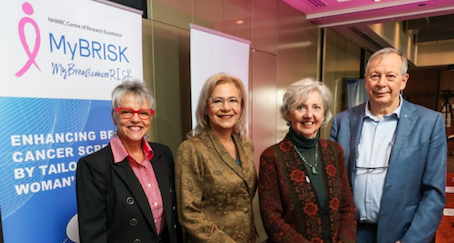
image credit- unimelb.edu.au
The way Australian women are screened for breast cancer could be fundamentally changed, owing to a new National Health and Medical Research Council (NHMRC) Centre for Research Excellence launched at the University of Melbourne.
The My Breast cancer RISK Centre (MyBRISK) will apply a holistic risk-based approach to breast cancer screening by considering multiple aspects of a woman’s risk of breast cancer. MyBRISK aims to enhance the benefits of screening and reduce the number of deaths arising from breast cancer.
Applying artificial intelligence (AI) computer techniques to analyse millions of mammograms, it will produce new and more powerful mammogram-based risk factors. MyBRISK will work with radiologists, radiology services and women to devise ways to better detect breast cancers earlier. Bringing together an international team of researchers, clinicians, health professionals and community representatives, MyBRISK aims to create pathways for more effective personalised screening that can be used by both publicly-funded and private radiology services.
MyBRISK Director University of Melbourne Professor John Hopper said current breast cancer risk assessment tools are cumbersome and lack precision, limiting their use. Professor Hopper said that by having breast screening tailored to each woman’s risk, resources could be better allocated and produce more accurate results.
MyBRISK is funded by the NHMRC and is a collaboration between the University of Melbourne, Melbourne’s St Vincent’s Hospital, Monash University, University of Western Australia, Queensland University of Technology and Cancer Council Victoria.
Image caption- L-R: Dr Sue Malta - Project Manager for MyBRISK, Rita Butera - Chief Executive Officer of BreastScreen Victoria, Gerda Evans - breast cancer survivor and advocate, Professor John Hopper - Chief Investigator, MyBRISK CRE. Photo: Peter Casamento




